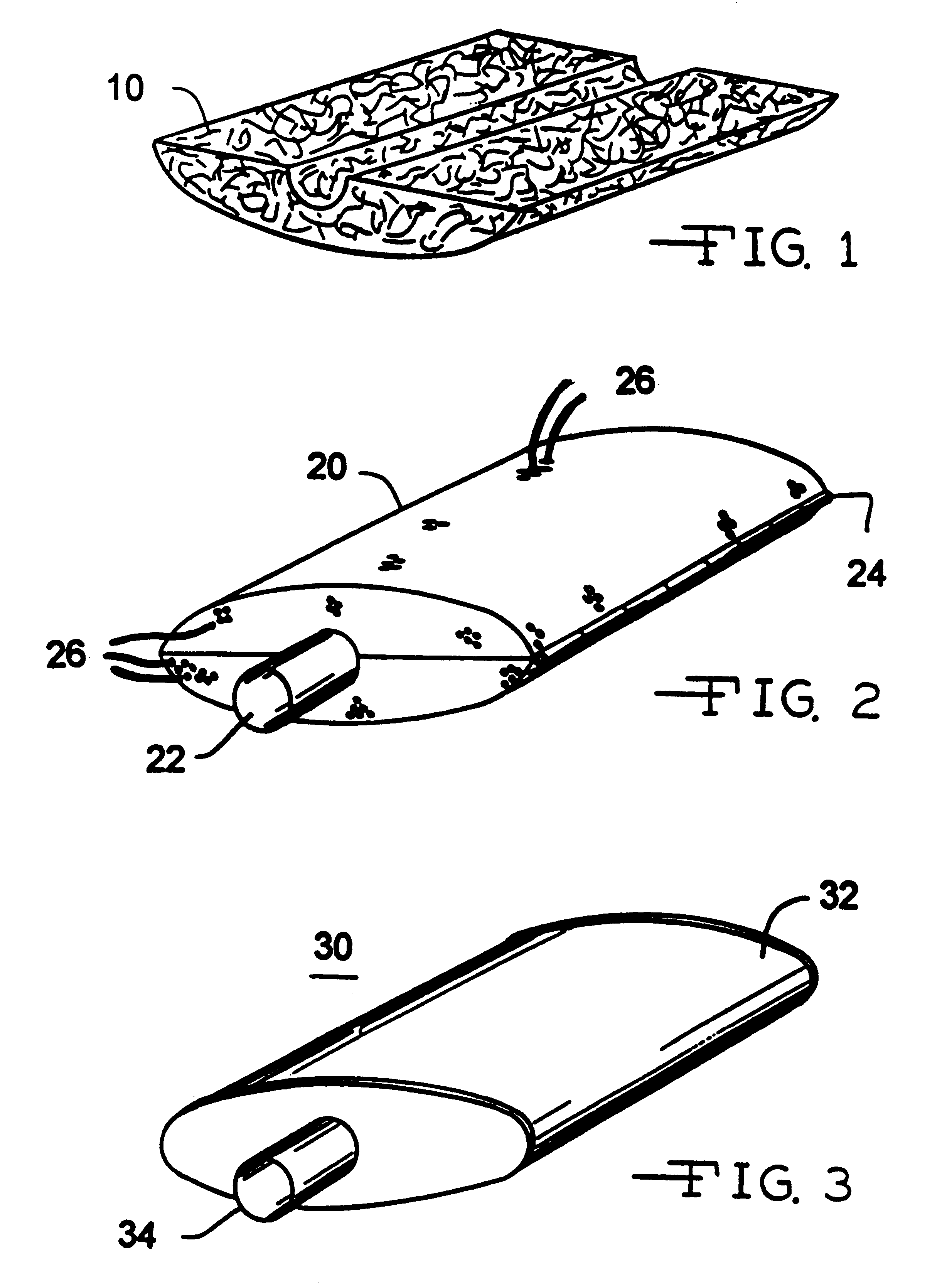Preformed sound absorbing material for engine exhaust muffler
a technology of engine exhaust and preformed material, which is applied in the direction of machines/engines, manufacturing tools, mechanical equipment, etc., can solve the problems of clam shell mufflers, requiring specific tooling, machinery and capital expenses, and generally too heavy to bear, so as to improve aerodynamics, reduce specific tooling costs, and reduce the volume of mufflers produced
- Summary
- Abstract
- Description
- Claims
- Application Information
AI Technical Summary
Benefits of technology
Problems solved by technology
Method used
Image
Examples
Embodiment Construction
[0011] The present invention is compatible with any glass fiber conventionally utilized as reinforcements. The term "glass fibers" as used herein shall mean filaments formed by attenuation of one or more streams of molten glass or strands which are formed when such glass fiber filaments are gathered together in the forming process. The term shall also mean yarns and cords formed by applying and / or twisting a multiplicity of strands together. Preferably, the present invention uses E glass type fibers. Other reinforcement glass compositions may be used.
[0012] The glass fibers typically will be coated with a conventional size which allows the fibers to unwind and to expand or fluff when blown with air. Generally, the size may contain a carrier solvent, normally water, a coupling agent, a film former material and the like.
[0013] Sizing compositions typically employed as coatings for glass fibers are conventionally applied to the surface of the glass fibers after the glass fiber has been...
PUM
| Property | Measurement | Unit |
|---|---|---|
| temperature | aaaaa | aaaaa |
| ambient temperatures | aaaaa | aaaaa |
| particle size | aaaaa | aaaaa |
Abstract
Description
Claims
Application Information
 Login to View More
Login to View More - R&D
- Intellectual Property
- Life Sciences
- Materials
- Tech Scout
- Unparalleled Data Quality
- Higher Quality Content
- 60% Fewer Hallucinations
Browse by: Latest US Patents, China's latest patents, Technical Efficacy Thesaurus, Application Domain, Technology Topic, Popular Technical Reports.
© 2025 PatSnap. All rights reserved.Legal|Privacy policy|Modern Slavery Act Transparency Statement|Sitemap|About US| Contact US: help@patsnap.com

